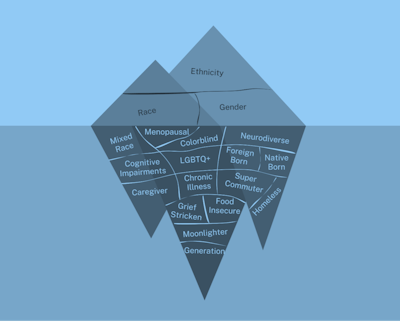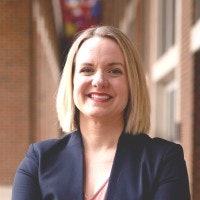DEI has emerged as a major culture war issue less than four years after the tragic murder of George Floyd prompted a national conversation regarding racial and structural inequities in American society. The DEI pushback is strong and widespread, especially in public higher education.
According to The Chronicle of Higher Education DEI Legislation Tracker, 28 states have enacted legislation that prohibits public universities from:
· considering race, sex, ethnicity, and national origin in admissions or employment, Dr. James H. Johnson, Jr.
Dr. James H. Johnson, Jr.
· establishing offices and spending money on DEI programs,
· using DEI statements in hiring and promotion, and/or
· requiring employees to participate in DEI programs.
As higher education institutions face a major enrollment cliff and businesses struggle to recruit and retain talent, we think these state-level policies—and growing anti-DEI public sentiment more generally—are taking our nation down the wrong path and may well spell disaster for U.S. competitiveness in the long run. If we as a nation aspire to win the war for talent; maintain a competitive edge in creativity and innovation; and remain attractive as a place to live, work, play, and do business, we must embrace diversity as a strategic demographic imperative.
To combat the pushback against DEI, we recommend higher education leaders pursue a five-fold strategy rather than attempting to skirt DEI bans, as some public universities reportedly have tried to do.
First, public universities must persuasively make the demographic case for maintaining a focus on DEI in higher education. People of color are driving population growth—and will continue to do so in the foreseeable future—not only nationally but also in anti-DEI states. Viewed from this demographic perspective, in a highly competitive global marketplace, embracing rather than opposing diversity is a form of enlightened self-interest for public universities, states imposing DEI bans, and the nation.
Second, public university leaders must insist on inserting the “B” for belonging in “DEI” political discourse. In pushing back on the political DEI pushback, they should explain that DEIB—Diversity, Equity, Inclusion, and Belonging—is about creating an institutional culture and climate that embraces the identities of all higher education constituencies: administrators, faculty, staff, students, and alumni. Carefully crafted and properly implemented DEIB policies, practices, and programming enhance institutional reputational equity through the creation of “diverse intellectual incubators of thought” capable of producing pathbreaking innovations that address some of the world’s most vexing problems.
Third, public universities must embrace the iceberg model of demographic diversity in student, faculty, and staff recruitment and retention. The U.S. Supreme Court’s recent decision on affirmative action and state level DEI bans necessitate such work. Like a freshwater iceberg, of which only about 10% is visible above waterline, some of our inherited and acquired traits, attributes, and experiences, as the figure below illustrates, are invisible to the naked eye. However, properly acknowledged and accommodated through the effective use of people analytics, embracing these invisible core elements of identity forces us to appreciate the overwhelming commonalities present in the nation’s populace and empowers us to embrace the ties that bind us together while dispensing of the “isms,” stereotypes, and phobias that drive us apart. Moreover, pushing back on the DEI pushback in this way will improve the communal sense of institutional belonging, enhancing student persistence and graduation while reducing staff turnover—longstanding issues that have plagued public universities.  The Iceberg Demographic Schema
The Iceberg Demographic Schema
Fourth, public universities must incentivize and reward interdisciplinary research that is purposefully designed to assess the veracity of competing theories, hypotheses, and perspectives on pressing societal issues, including those undergirding the DEI pushback. Numerous examples already exist in higher education. We offer one here.
Funded by major foundations and designed to address “diversity of thought” on the causes and consequences of growing inequality in American cities in the 1990s, the Multi-City Study of Urban Inequality (MCSUI) is an excellent education and training model worthy of emulation in today’s highly polarized geo-political environment. In addition to groundbreaking research published in highly respected scholarly outlets, MCSUI’s appended undergraduate, doctoral, and postdoctoral research and training programs produced a new generation of “thought diversity” scholars now serving as senior academic and administrative leaders in higher education and major research think tanks spanning the political and ideological spectrum.
Finally, public universities must reinvent their curricula and reimagine instruction by adopting a courageous conversation model of student engagement in the academic enterprise. This approach allows students to wrestle with the various competing perspectives on issues of critical import to our society and world. In response to the push for political neutrality in public higher education, we have developed such an approach that we employ in our course offerings in UNC’s Kenan-Flagler Business School. Dr. Allison Schlobohm
Dr. Allison Schlobohm
A modified version of the fishbowl method of in-class conversation, our reinvented instructional approach creates a “brave” space for students to engage in courageous conversations—to openly share diverse thoughts and opinions as well as vigorously debate sensitive and controversial issues where diverse and divergent opinions and interpretations may exist. The goal is not to indoctrinate or advocate for any specific stance or viewpoint; rather, we aim to facilitate honest, respectful, and transparent dialogue so that students are fully aware of the veracity of diverse viewpoints—strengths, weaknesses, pros, cons—that undergird politically sensitive issues and topics. Course evaluations and surveys of student experiences strongly suggest that the courageous conversation model, properly infused throughout the university curriculum and mandated as professional development for administrators and faculty, is an excellent way to prepare the next generation of “thought diversity” leaders.
As public universities, institutions of higher education more generally, and state decision makers encounter increasing political pushback on DEI, we encourage them to operate from a demographically informed perspective and push back on the pushback. Make the demographic case, prioritize belonging, leverage iceberg demographics, reward interdisciplinary research, and hold courageous conversations. These efforts will do much more for future prosperity than will short-sighted bans and political censorship.
____________________________________________________________________________
Drs. James H. Johnson, Jr., Jeanne Milliken Bonds, and Allison Schlobohm are professors in UNC-Chapel Hill’s Kenan-Flagler Business School. Dr. Allan Parnell is Vice President of the Cedar Grove Institute for Sustainable Communities based in Mebane, NC.
The views expressed by the authors are solely their own and do not represent their employers.





















